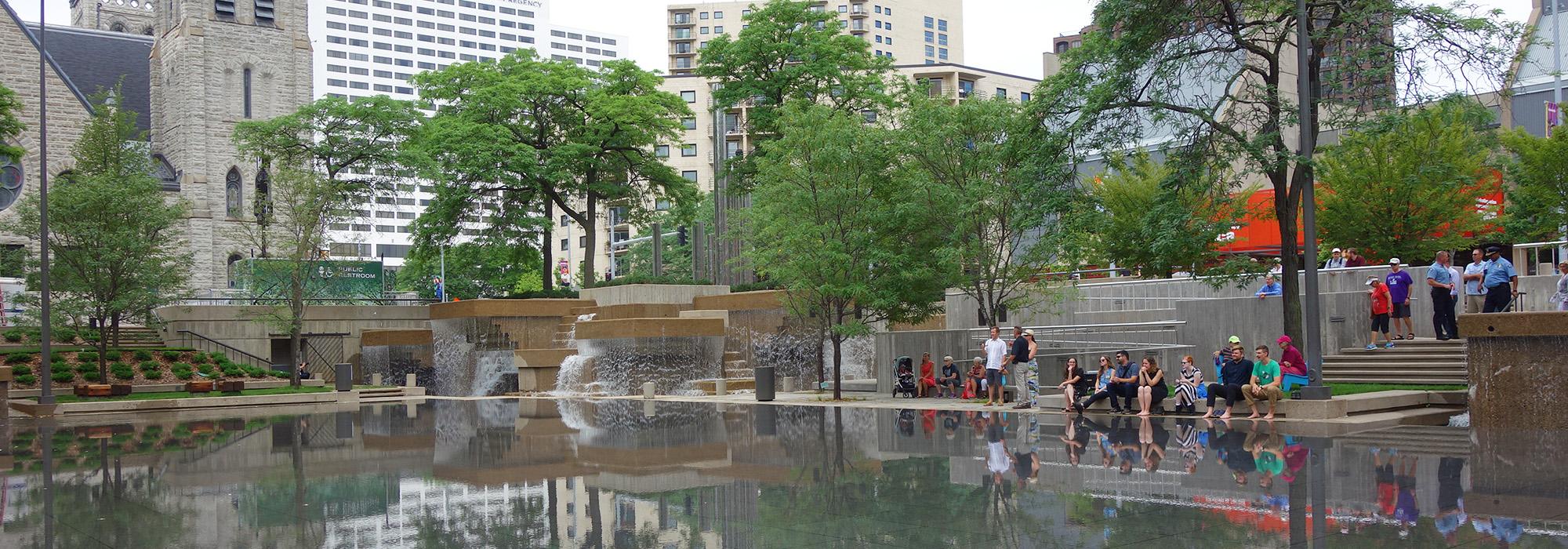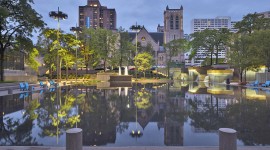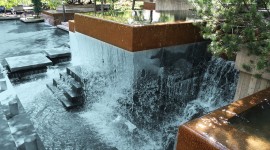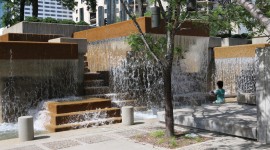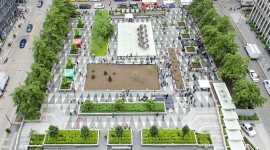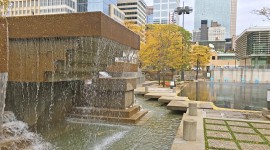Peavey Plaza Reopens at Last
At first, only children entered the scrim of water marking the historic location of Peavey Plaza’s pool. Then news cameramen, seeking the right angle to shoot the ribbon-cutting, shuffled in without even removing their shoes. By the end of the festivities on Thursday, July 18, everyone who had gathered for the Grand Reopening was in the water, barefoot and smiling. They followed the example of Minneapolis mayor Jacob Frey and other dignitaries who had no choice but to get their feet wet—the ceremonial ribbon was in the pool.
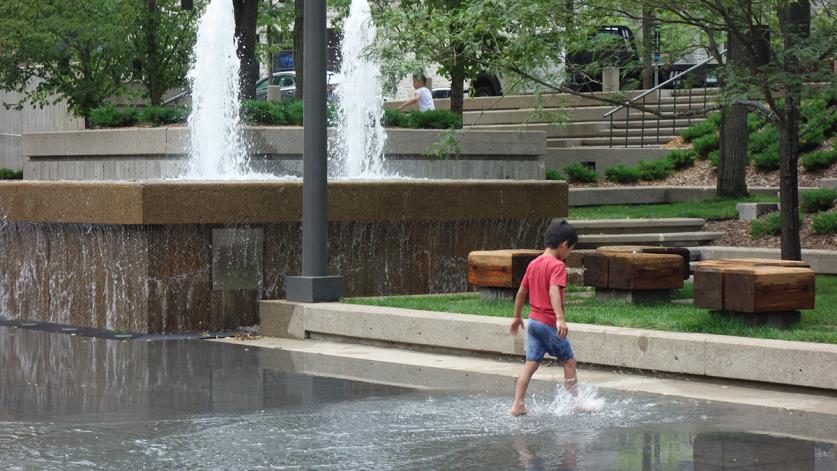
Although plans were announced in 2012 to demolish the plaza, which lies adjacent to the city’s Orchestra Hall, on this recent Thursday, sunshine and splashing fostered a feeling of reconciliation between those who had initially sought to remove the urban gathering place and those who fought to save it. While advocates for the Modernist landscape by M. Paul Friedberg did not get everything they wanted—including the original, lower elevation and depth of the historic pool—the essential character of Friedberg’s masterful design was maintained, and wheelchairs can now freely enter the scrim of water.
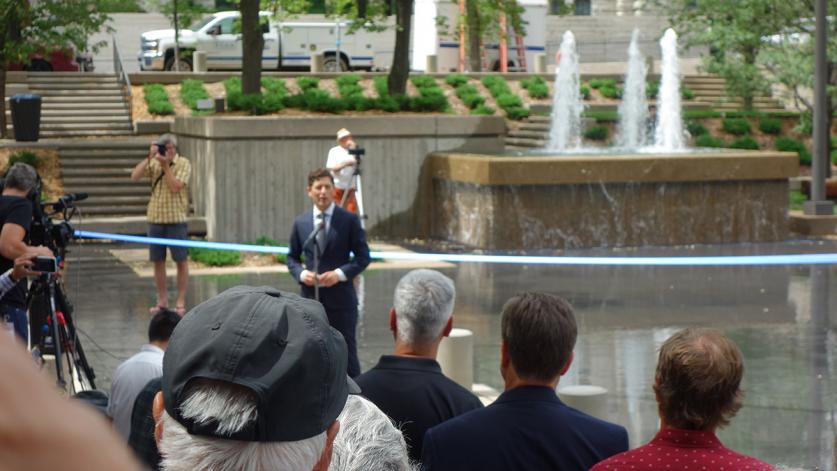
State-of-the-art pumps have returned the fountains to life after many dry years. The stainless-steel cylinders that top the fountains were polished to remove copper-colored stains that had accumulated over time. The pool’s water can now be drained quickly to allow the area to be used for events, including the Minnesota Orchestra’s popular “Sommerfest.” Before a recent concert in neighboring Orchestra Hall, temporary stalls offered food and libations, and the Hiawatha Tango Orchestra and Tango Society of Minnesota provided entertainment. The city has contracted with the non-profit Green Minneapolis to program and manage the plaza, and the organization is committed to keeping the space lively.
That task will be made easier by the fact that the rehabilitated plaza has already proved to be a people-magnet. As soon as it opened, it drew a lunchtime crowd from nearby offices, including the headquarters of Target, which generously supported the plaza’s $10 million revitalization. Target and other private donors raised $4 million, matching the $4 million invested by the City of Minneapolis. The State of Minnesota provided the final $2 million.
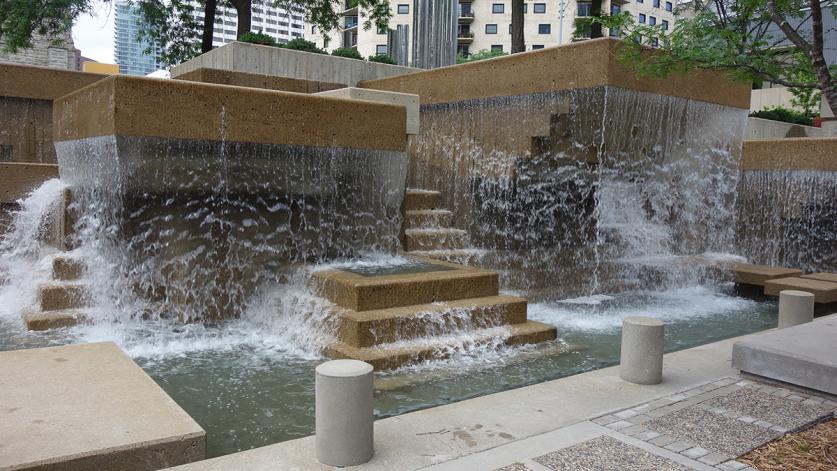
It has been ten years since the city initiated the project. During that time, Peavey Plaza was listed in the National Register of Historic Places. TCLF and the Preservation Alliance of Minnesota successfully sued the city to stop the original plans, which would have annihilated the plaza’s innovative design. Revised plans, meeting the Secretary of the Interior’s Standards for Rehabilitation, were implemented instead.
The rehabilitated plaza that so many will now enjoy is the result of efforts by myriad organizations and individuals who lent their talents and energy to the cause of saving a significant Modernist landscape. Among them are the Preservation Alliance of Minnesota; DOCOMOMO US/MN; Preserve Minneapolis; Green Minneapolis; the Minnesota State Historic Preservation Office; and the Minneapolis Heritage Preservation Commission. Thanks are also owed to the Minneapolis Downtown Council; the Downtown Improvement District; the Minnesota Orchestral Association; the Minnesota Council on Disability; and the City of Minneapolis (including Mayor Jacob Frey; former mayors Betsy Hodges and R. T. Rybak; the Minneapolis City Council, especially Council Member Lisa Goodman; the Department of Public Works, including former director Mike Kennedy and director Robin Hutcheson, Lisa Cerney, and Jennifer Swanson; and Peter Hendee Brown). Burns and Hansen, Attorneys at Law, provided legal expertise, and the work was carried out by the Minneapolis-based landscape architecture firm Coen + Partners, working alongside Global Specialty Contractors, PVN (now New History), Fluidity Design Consultants, Tillett Lighting Design, Barr Engineering, and Professional Project Management, Inc.
The process was long but worth the wait, and Peavey Plaza is once again the jewel in the crown of the Nicollet Mall, set to charm Minneapolitans and visitors for decades to come. The success of these efforts also bodes well for the future of postwar landscape architecture more generally, as TCLF’s Charles Birnbaum remarked:
The rebirth of Peavey Plaza, spearheaded by Cohen + Partners and a consortium of consultants, is a great success for the citizens of Minneapolis. And with a long-term stewardship commitment from Green Minneapolis and the city, the pioneering Modernist landscape by M. Paul Friedberg will continue to illustrate that great works of landscape architecture, like great buildings, can be renewed and restored for future generations in a way that honors their original design intent while accommodating contemporary needs and uses.



